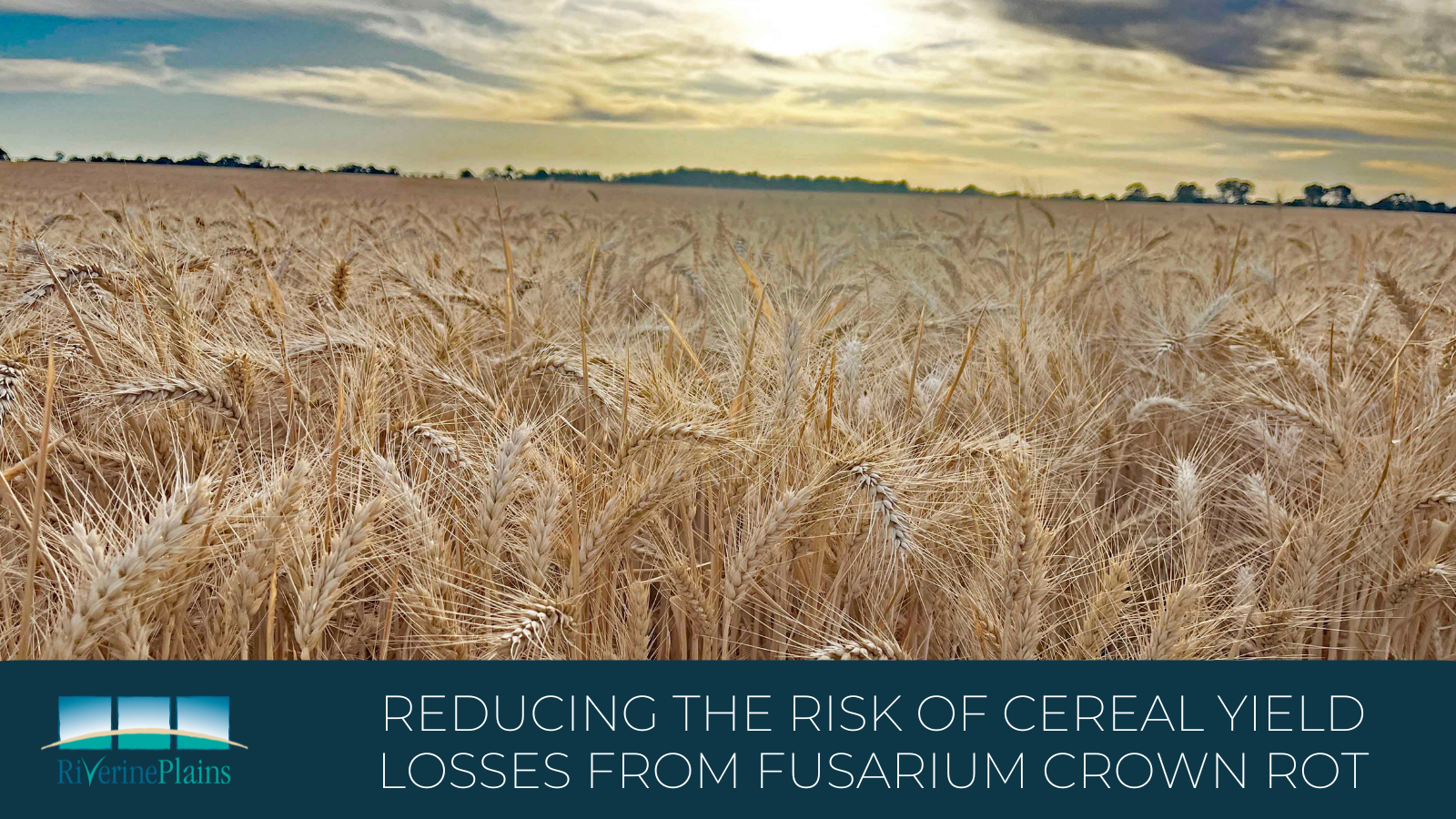Using dry sowing as a tool to manage risk

Key messages:
- dry sowing can help farmers manage production risk and spread the labour load
- when dry-sowing, ensure depth of seed placement is correct
- avoid dry sowing into paddocks with high weed seedbanks and ensure separation of seed and pre-emergent herbicides
While farming would be much easier if we knew how much rain was going to fall and when, we can’t know the timing of the break, or any in-season follow-up rainfall, until after it happens. This means there is always a level of risk around sowing, however one of the ways farmers can manage their risk is through dry sowing.
So, what do farmers need to consider for their dry sowing program to be a success?
What is dry sowing?
Dry sowing and early sowing are terms that are sometimes used interchangeably, but which mean different things.
Dry sowing involves sowing crops before there’s enough rainfall to start germination (i.e before the break) and involves sowing seed into a dry seedbed, with or without stored soil moisture. In the Riverine Plains, dry sowing often starts around Anzac Day, or sometimes earlier.
Early sowing involves sowing crops into a moist seedbed before the usual sowing window, for example after an early break in late summer or early autumn, using feed or dual-purpose varieties for grain and fodder production (see also our 2023 dual purpose crops blog). Some growers are also successfully sowing these early types for grain only, a strategy being supported by early work conducted by Riverine Plains through the Improved drought resilience through optimal management of soil and water project.
Why dry sow?
Dry sowing allows crops to germinate immediately after a breaking rain. This speeds establishment because the seed is germinating in warmer soil conditions, promoting early vigour. As a result, dry-sown crops can be days, or sometimes weeks, ahead of those sown after the break. Crops that establish early also tend to have more advanced root systems, which helps them tolerate waterlogging, and they can better outgrow pests like slugs and slaters compared to later sown crops. Earlier establishment also provides a longer growing season, which can allow crops set a higher yield potential.
Dry sowing also helps farmers manage the risk of paddocks becoming too wet to sow and spreads the labour load over a longer period, which is important when managing large areas. Dry sowing also improves stubble flow through the seeder, reducing blockages.
Weeds & herbicides
One of the biggest challenges in dry sowing is managing weed seedbanks effectively. Weeds compete for resources and sowing into paddocks with high weed seedbanks can exacerbate weed pressures and reduce crop yields. For this reason, avoid dry sowing into very weedy paddocks.
Optimising pre-emergent herbicide efficacy is key to the dry sowing process. Because knockdown herbicides aren’t effective if weeds haven’t yet germinated, dry-sown crops tend to rely more on pre-emergent residual herbicides. However, these can fail in marginal moisture, and there are limited post-emergent herbicide grass control options available in cereals. Also, if breaking rainfall is delayed, the window for herbicide activation becomes narrower. This highlights the importance of chemical choice and the need for precise application timing in the pre-emergent window. Choosing products with lower water solubility is best for dry sowing and growers should discuss the best option with their agronomist.
Consider also that herbicides that work best for dry sowing can also bind to stubble, so farmers will need to ensure the herbicide has enough soil contact to be effective (see this GRDC factsheet).
Ensuring the physical separation of crop seed and herbicide at sowing is key to preventing herbicide damage to emerging crops. This requires equipment to be properly calibrated and farmers should always follow recommended chemical application rates to safeguard crop health.
Damage can occur when plant-back periods and rainfall haven’t allowed the breakdown of residual herbicides applied during summer or the previous season. Always adhere to plant-back requirements specified on the herbicide label.
Seed placement
Consider whether dry sowing is appropriate for your paddocks and systems, as heavy or hard soils can produce large clods that reduce seed-soil contact and impact emergence.
Dry-sown crops may have to remain in the soil for days or weeks for germinating rains, so placing seed at the correct depth is critical. A shallow sowing may increase the risk of seed germinating in a false break, and can increase the risk of predation. An excessively deep planting may delay or even prevent emergence, resulting in uneven establishment and crop development. Dry sowing strikes a delicate balance between ensuring seeds are placed at an optimal depth for germination, while avoiding unfavourable soil conditions above or below the seed.
Fertiliser should be also separated from the seed to prevent fertiliser toxicity in the germinating seed. This can be worse in dry-sown crops when there is limited soil moisture to disperse fertiliser and in wide rows, where seed and fertiliser are more concentrated.
Time of sowing
When dry sowing, aim to have crops germinate during their recommended sowing window, so that they flower during their optimum flowering period. Crops that emerge too early for their maturity range will risk frost damage at flowering, while crops that emerge too late for their maturity may be exposed to heat and moisture stress at flowering.
Keep an eye on the forecast rainfall outlook for your location. If rain hasn’t fallen by your pre-determined date, be prepared to halt or adjust the dry sowing program, especially for higher-risk, higher input crops like canola.
Pulses
Pulses and legume pastures can also be dry sown and are an option in paddocks with high grass weed burdens because they allow for in-crop herbicide use.
Nitrogen-fixing rhizobia are sensitive to dry conditions, particularly in acidic soils. Peat inoculum rates can be increased, or granular inoculant used, to improve the chances of successful nodulation if there is a likely dry period between sowing and germinating rains. There is less concern if a legume, nodulated by the same rhizobia group, was grown recently in the paddock and the soil favours rhizobia survival.
Avoid dry sowing pulses on hostile or acid soils.
Plan ahead!
A bit of planning can help increase the likelihood of success when dry sowing.
If dry sowing for the first time, start with a small area before expanding the following year. Dry sowing the whole cropping program is high risk – it should only make up a proportion of the program.
Riverine Plains project helping farmers manage sowing risk
Riverine Plains are involved in a new project, supported by Ag Excellence Alliance Inc. (Ag Ex) through funding from the Australian Government’s Future Drought Fund, looking at different factors influencing the effectiveness of dry sowing in the region.
Two demonstration trials will be set up at Rand and Murchison to compare:
- Canola into retained wheat stubble (higher moisture) vs canola into a burnt or cultivated wheat stubble (less moisture).
- Speed of dry sowing to optimize sowing depth and soil throw (fast vs slow).
- Nutrition and seeding rate in wheat- fertiliser placement (eg separate urea from seed).
- Weed control practices for dry sowing (pre-emergent herbicides when no knock down).
For further information, please contact Jane McInnes by emailing jane@riverineplains.org.au
Resources and further reading
Dry sowing and pre-emergent herbicides (GRDC)
Increase pulse inoculant in dry conditions this seeding - GRDC
Understanding pre-emergent herbicide availability, selectivity and persistence (GRDC)


